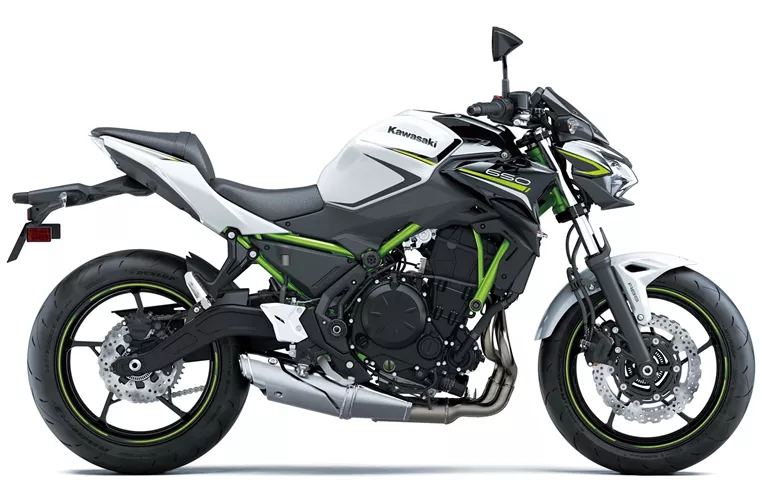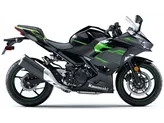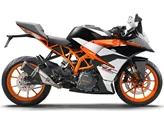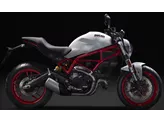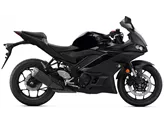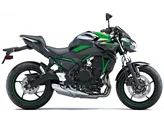Kawasaki Z650 2020 vs. Kawasaki Ninja 400 2018
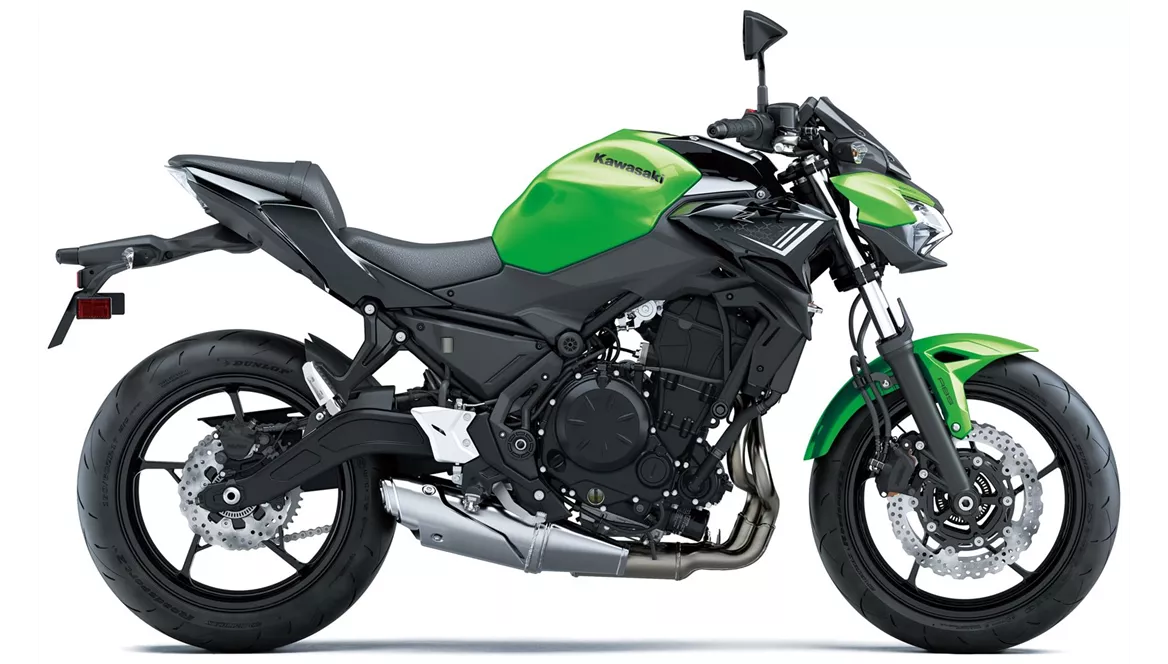
Kawasaki Z650 2020

Kawasaki Ninja 400 2018
Genel bakış - Kawasaki Z650 2020 vs Kawasaki Ninja 400 2018
The Kawasaki Z650 2020 and the Kawasaki Ninja 400 2018 are both popular models from Kawasaki, but they have some distinct differences in terms of specifications and strengths.
Starting with the engine, the Kawasaki Z650 2020 is equipped with a powerful two-cylinder engine that delivers 68.2 HP of power and 65.7 Nm of torque. On the other hand, the Kawasaki Ninja 400 2018 has a slightly less powerful engine, producing 45 HP of power and 38 Nm of torque. Both bikes have a liquid cooling system and fuel injection, ensuring efficient performance.
In terms of suspension, both bikes feature a telescopic fork front suspension and a swing arm rear suspension with preload adjustment. The Kawasaki Z650 2020 has a front suspension diameter of 41 mm, while the Kawasaki Ninja 400 2018 has the same diameter. This ensures a comfortable and stable ride for both models.
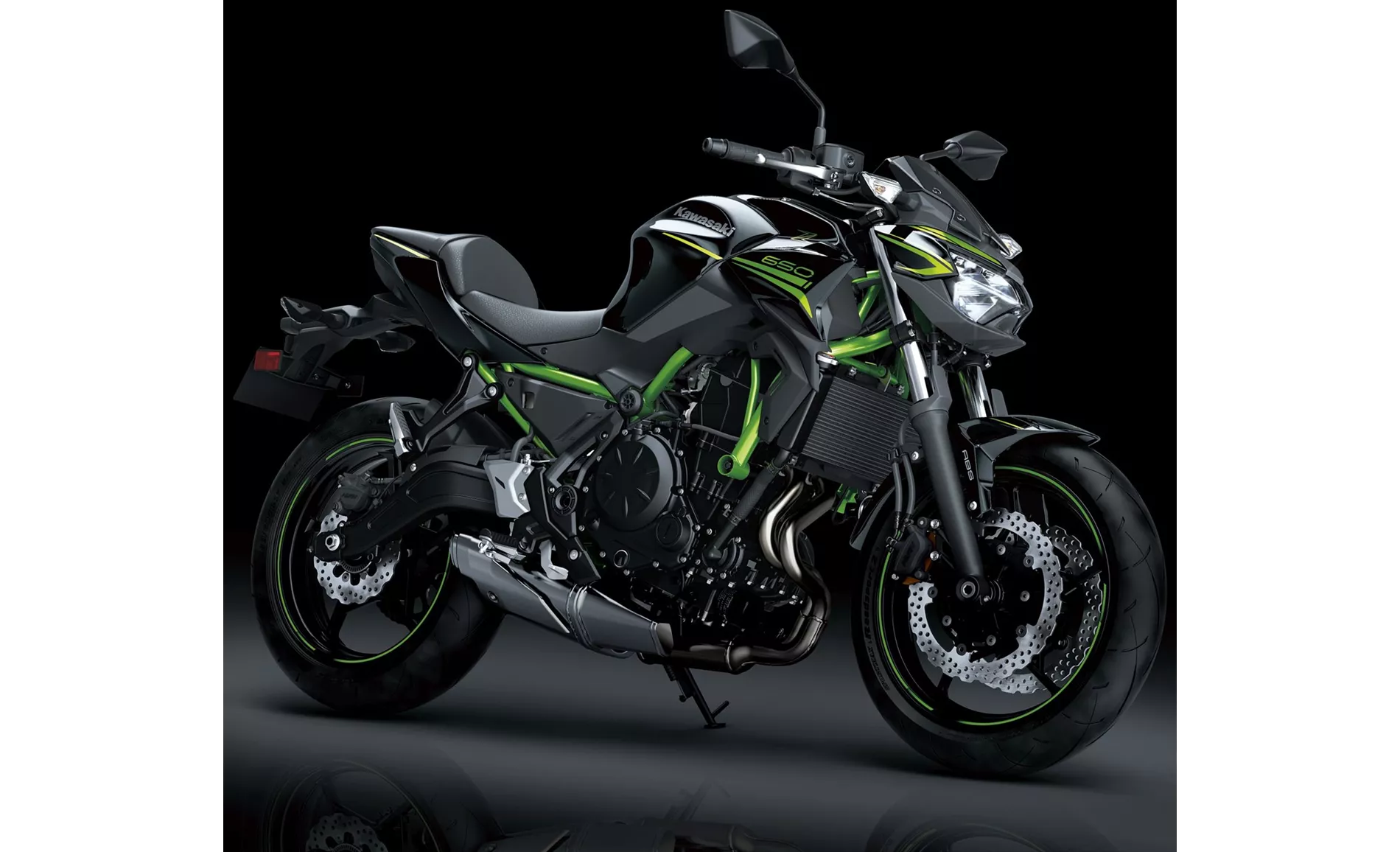
Kawasaki Z650 2020
When it comes to the chassis, both bikes have a steel tubular frame that provides strength and stability. The Kawasaki Z650 2020 has a slightly larger rake angle of 65.5 degrees compared to the Kawasaki Ninja 400 2018, which has a rake angle of 63 degrees. The Z650 also has a longer wheelbase of 1410 mm, while the Ninja 400 has a wheelbase of 1370 mm. These differences in frame and wheelbase contribute to the handling characteristics of each bike.
In terms of braking, the Kawasaki Z650 2020 is equipped with double disk brakes with a diameter of 300 mm and double piston technology. The Kawasaki Ninja 400 2018, on the other hand, has a single disk brake with a larger diameter of 310 mm and double piston technology. Both models feature petal technology, which enhances the braking performance.
Both bikes are equipped with ABS, providing advanced rider assistance systems for enhanced safety. They also have similar tire sizes, with the Z650 having a front tire width of 120 mm and a rear tire width of 160 mm, while the Ninja 400 has a front tire width of 110 mm and a rear tire width of 150 mm. Both bikes have a 17-inch tire diameter.
In terms of dimensions and weights, the Kawasaki Z650 2020 has a seat height of 790 mm and a kerb weight of 187.1 kg (with ABS). The Ninja 400 2018 has a slightly lower seat height of 785 mm and a lighter kerb weight of 168 kg (with ABS). Both models have a fuel tank capacity of 15 liters for the Z650 and 14 liters for the Ninja 400.

Kawasaki Ninja 400 2018
In terms of strengths, the Kawasaki Z650 2020 is praised for its powerful engine, aggressive intake noise, compact dimensions, low seat height, stable chassis, TFT display with connectivity, and grown-up look. On the other hand, the Kawasaki Ninja 400 2018 is praised for its chassis suitable for sporty use, low weight and effortless handling, engine with smooth response, relaxed and confidence-enhancing seating position, and LED headlights.
However, both models have their weaknesses. The Kawasaki Z650 2020 has been noted to have a front brake pressure point issue, and it may be uncomfortable for taller riders. The Rideology App, although a connectivity feature, is not considered to be 100% sophisticated. On the other hand, the Kawasaki Ninja 400 2018 has non-adjustable brake and clutch levers, and riders over 180 cm tall may experience excessively loud wind noise with the original windshield.
In conclusion, the Kawasaki Z650 2020 and the Kawasaki Ninja 400 2018 are both impressive models with their own strengths and weaknesses. The Z650 offers a more powerful engine and a grown-up look, while the Ninja 400 provides a sporty chassis and effortless handling. Riders should consider their preferences and priorities to choose the model that best suits their needs.
Teknik Özellikler Kawasaki Z650 2020 ile karşılaştırıldığında Kawasaki Ninja 400 2018
Karşılaştırıldığında Artıları ve eksileri
Karşılaştırıldığında Artıları ve eksileri
Kawasaki Z650 2020
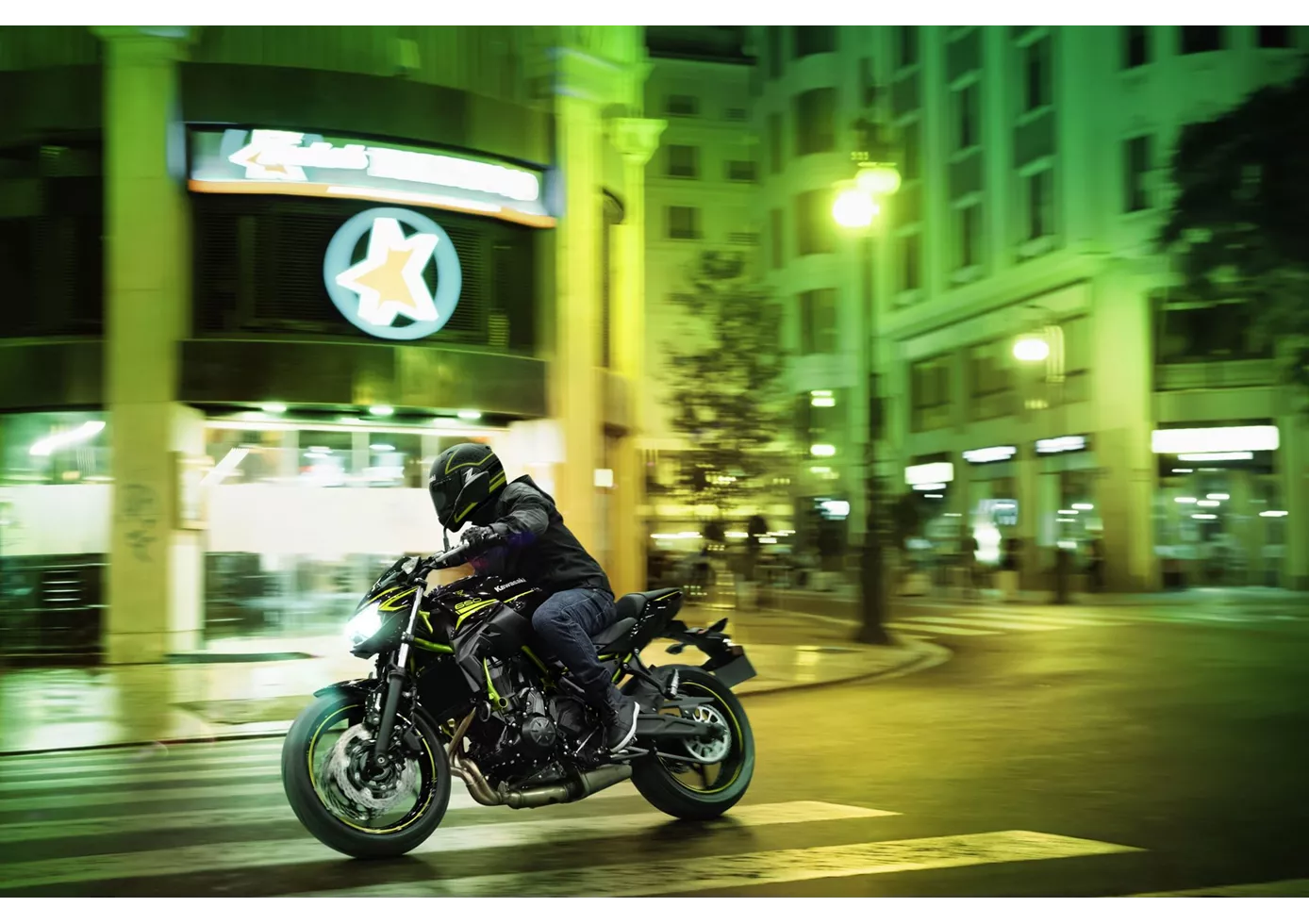
Kawasaki'nin yeni Z650 ile bir araya getirdigi eksiksiz paket tek kelimeyle harikulade. Tek tek teknik bilesenler sizi sasirtmayabilir, ancak bir araya geldiklerinde herkesin keyif alacagi hos ve nötr bir motosiklet ortaya çikiyor. Sirret tuhafliklar yok - sadece virajli köy yollarinda gerçekten iyi çalisan çiplak bir motosiklet. Henüz rakiplerinde bulamadigimiz TFT ekran ve daha büyük Z modellerine yönelik yetiskin görünümü elbette bir arti. Sadece ön frenin basinç noktasi daha net tanimlanabilirdi - ancak bu fiyat araliginda her seye sahip olamazsiniz.
Kawasaki Ninja 400 2018

Ninja 400, süperspor dünyasina mükemmel bir giris olarak özetlenebilir. A2 ile daha fazla güç mümkün degil, görünüsü çok daha fazla gücü çagristiriyor, aracin kullanimi kolay, her açidan affedici ve yine de gerçekten sportif bir sürüs tarzina izin veriyor. Çesitli 250 metreküp makinelerde güç eksikligi konusunda hakli endiseleri olan herkesin artik bahanesi kalmadi. Ninja 400, iyi ki buradasin!
Fiyat Karşılaştırması Ortalama Piyasa Fiyatı Kawasaki Z650 vs Kawasaki Ninja 400
There are a few key differences between a Kawasaki Z650 2020 and a Kawasaki Ninja 400 2018. In terms of price, the actual average price of a Kawasaki Z650 2020 is about 11% higher. A Kawasaki Z650 2020 experiences a loss of 30 USD in one year of ownership. This is offset by a loss of 130 USD for a Kawasaki Ninja 400 2018. Compared to Kawasaki Ninja 400 2018 there are more Kawasaki Z650 2020 bikes available on the 1000PS.de Marketplace, specifically 21 compared to 10. It takes less time to sell a Kawasaki Z650 with 80 days compared to 105 days for a Kawasaki Ninja 400. Since model year 2017 1000PS.de editors have written 31 reviews for the Kawasaki Z650 and 9 reviews for the Kawasaki Ninja 400 since model year 2018. The first review for the Kawasaki Z650 was published on 11/8/2016 and now has more than 25,000 views. This compares to more than 44,300 views for the first review on Kawasaki Ninja 400 published on 11/22/2017.
